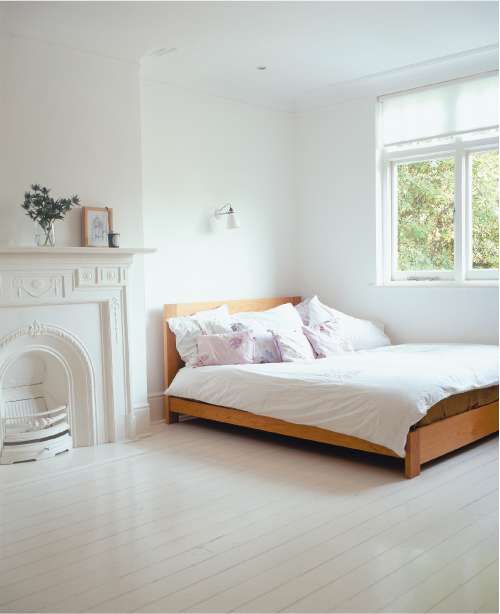Peter York - The way we live now: It'll be all white

The big memorable thing about The Knack... and How To Get It, an otherwise second-rank Brit New Wave film of 1965, was that it featured a white-out house. It was a key, almost epic moment in its own little way and one that looks important to designers as they flick endlessly through old stuff for new ideas. The point was that a film was showing – admittedly in an OTT way; they painted everything white – what smart young people were actually doing, namely putting white paint everywhere. The technology had only just let them do it; genuinely washable plastic emulsion paints that were easy for amateurs to slosh on were a 1960s development. So was the launch of Brilliant White, the white that made the traditional kind look dingy.
In Grey Britain, only just emerging from a world of bombsites into Victorian slum clearance, this let-the-sunshine-in theme was compelling (the young, urban, white-out mob were also pioneers of the knock-through; bashing two small downstairs rooms together to make one bigger one, and the sand-and-seal mania for ditching archaic carpets and lino in favour of orange, sanded floorboards, enabled by another set of useful 1960s plastics). White was the colour of everything new and good – innocence, cleanliness, youth – and perpetual whiteness was now a practical proposition for ordinary people without servants, as more innovations – washing machines, detergents, easy-care fabrics – made it practical in textiles, while another development meant work-surfaces in the new fitted kitchens could be covered in lovely white laminates.
For the past 40 years and more, the white-out has had symbolic status as the automatic decorative theme of two crucial high-status temples of modernity: the fashion photographer's studio (think Blow-Up) and the contemporary art gallery (think White Cube). So at any time over the past 50 years or so, when there's been that urge to simplify, cut the crap, chuck out the chintz and get real, someone's come in with a very large pot of white paint. It happened in the 1990s as part of the Modernist Revival, when white was the default background for all that Mid-Century furniture. And it's always been the start-point for architects and designers with formal training. But white doesn't have to be hard-line, hard-surface Modernist, it can be played any number of ways, including a girly Romantic one with a touch of Free Spirit.
Here's the eternally romantic side of white in a lady's bedroom. Everything in this girly shrine is white. This kind of artless simplicity takes iron discipline: just let in the minimum of ordinary jarring human baggage and it's spoilt. This is a lady who lives alone and tells her gentleman callers to leave their shoes at the door.
Join our commenting forum
Join thought-provoking conversations, follow other Independent readers and see their replies
Comments
Bookmark popover
Removed from bookmarks